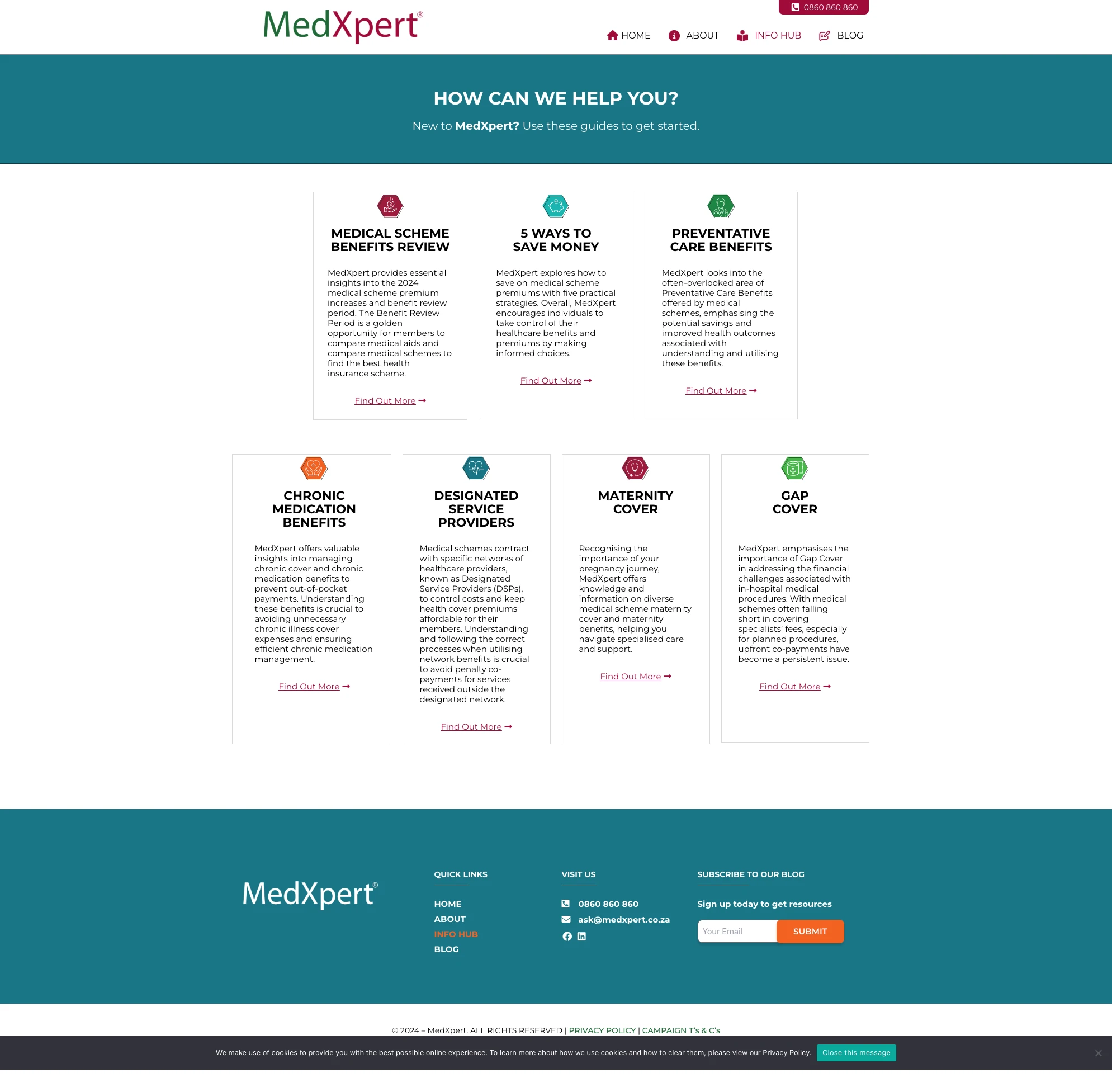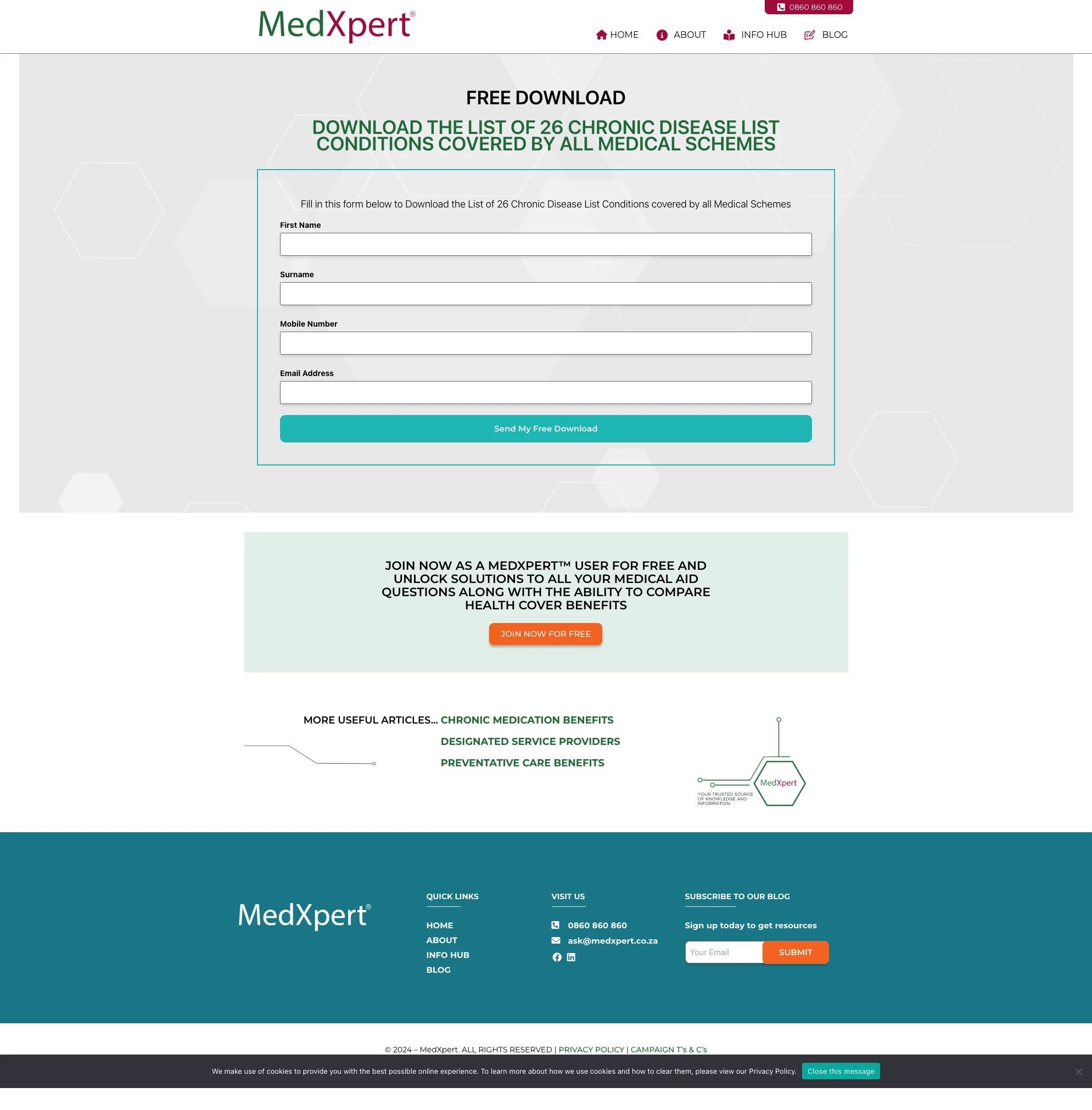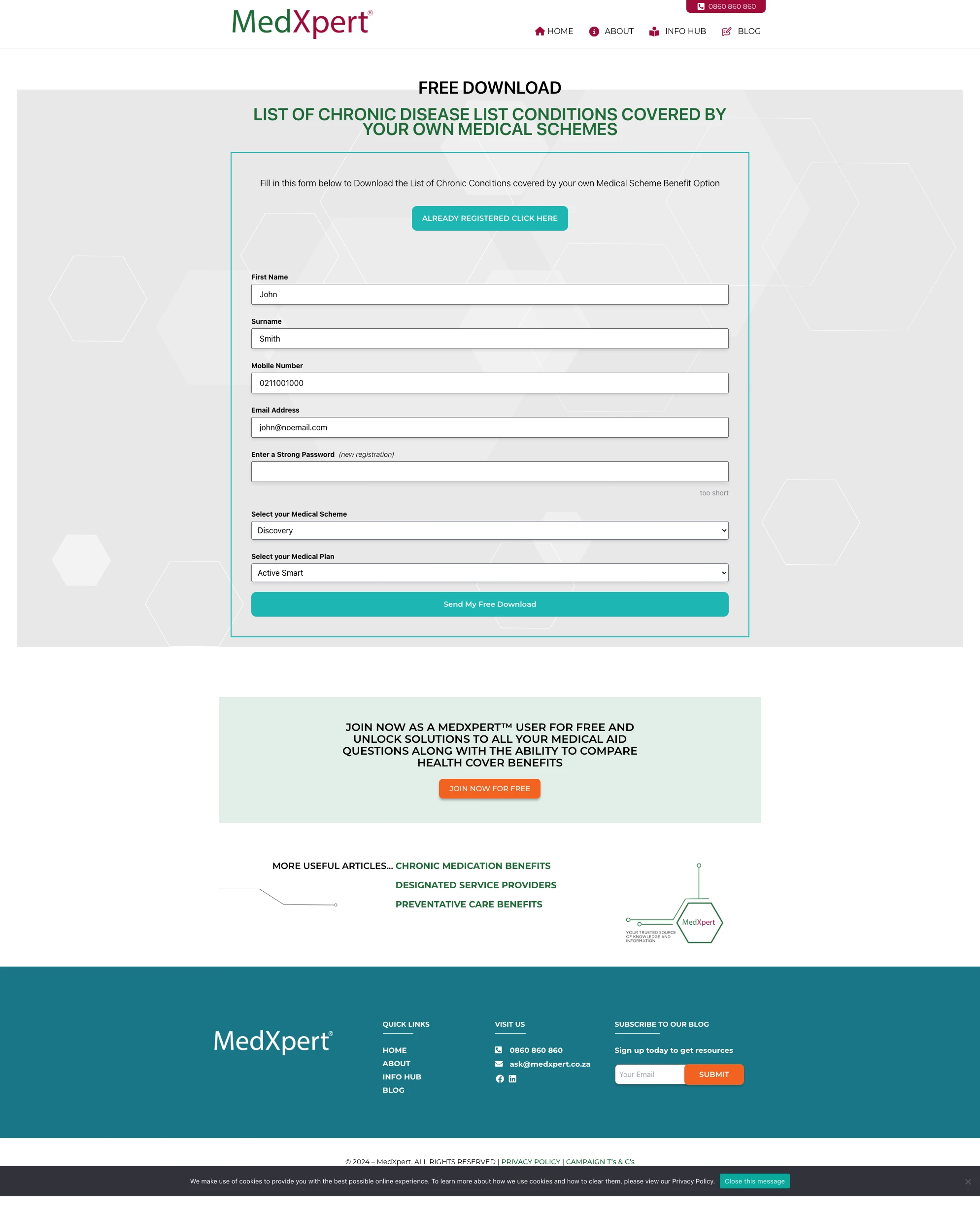MedXpert: Embedded React SPA for WordPress
A portable, embedded React SPA that modernized Optivest’s MedXpert medical-aid plan selection—secure, fast, and independent of WordPress core updates. Delivered as a versioned plugin with custom REST endpoints, nonce security, and Docker-based CI/CD.
Technologies Used

Project Gallery



Project Metrics
Timeline
2023–2024
Architecture
Embedded React SPA packaged as a WordPress plugin
Security
Nonce-protected API calls; isolated from WP updates
Performance
Zero page reloads; persistent state across steps
Portability
Drop-in plugin install across WordPress instances
DevOps
Docker environments with Git versioning and staged releases
Challenges
- Replace a legacy multi-page form with a modern, stateful SPA.
- Maintain strict security for API interactions inside WordPress.
- Ensure portability and long-term maintainability as a plugin.
- Support persistence, validation, and resumable progress.
- Stabilize delivery with a clear dev → staging → production pipeline.
Solutions
- Packaged the SPA as a self-contained WordPress plugin for clean installs and updates.
- Built custom WordPress REST endpoints with nonce validation and scoped permissions.
- Implemented Context API for persistent client-side state and step progression.
- Added robust form validation, progress tracking, and error handling.
- Established Dockerized environments and Git-based release flow.
Results
- Faster, smoother plan exploration with zero page reloads.
- Hardened API security via nonce tokens and endpoint scoping.
- Independent from WordPress core/theme updates, reducing maintenance risk.
- Reusable codebase and plugin architecture enable white-label potential.
- Clear deployment workflow improves reliability and rollback safety.
Project Overview
Optivest’s MedXpert needed to retire a legacy, form-heavy flow and move to a fast, resilient Single Page Application. We delivered a React SPA embedded inside WordPress as a portable plugin—secure by design, easy to deploy, and independent from WordPress core updates. The result is a modern plan-selection experience with persistent state, robust validation, and a stable DevOps pipeline.
Scale & Performance
The SPA eliminates full-page reloads, keeps user progress intact across steps, and reduces friction on mobile. Client-side state via Context API and targeted API calls to custom REST endpoints keep interactions snappy. The plugin model minimizes runtime dependencies, improving stability across environments.
Key Features
Enrollment & UX
- Multi-step medical-aid plan selection with guided progression.
- Persistent state and resumable progress (Context API).
- Custom validation rules and inline error messaging.
- Mobile-responsive layout with Tailwind CSS and Styled Components.
Security & Data
- Nonce-protected WordPress REST endpoints with scoped capabilities.
- Backend form data handling using custom post-type storage and filters.
- Sanitization/validation on server-side input.
Admin & Extensibility
- Portable, versioned plugin for clean installs/updates.
- Integration-ready to piggyback Gravity Forms or CPT workflows.
- Structured developer documentation and built-in debug support.
Deployment & Maintainability
- Dockerized development, staging, and production environments.
- Git-driven release process for predictable rollouts and rollbacks.
- Minimal external plugin dependencies for long-term stability.
Technology & Architecture
- Frontend: React SPA (Context API for global state), Tailwind CSS, Styled Components, Webpack bundling.
- WordPress Integration: Custom REST routes in PHP secured with nonces and capability checks; data persisted via custom post types.
- Packaging: Fully self-contained WordPress plugin—no theme coupling, minimal dependency footprint.
- Data Layer: Uses WordPress MySQL for persistence; API interactions are explicitly scoped and validated.
- Ops: Docker-based local environments and staged pipelines; Git for version control and release tagging.
Process & Delivery
- Audit & Design: Mapped legacy form logic, user journeys, and security requirements.
- Incremental Build: Implemented the SPA in discrete modules with shared form logic and validation.
- API Hardening: Delivered custom REST endpoints, nonce workflows, and capability checks.
- Plugin Packaging: Encapsulated the SPA and APIs into a single, portable plugin.
- CI/CD: Established Docker environments and a Git-based deploy path from dev → staging → production.
- Handover & Support: Documentation, debug tooling, and client training for ongoing operations.
Outcomes & Impact
- Experience: Faster plan exploration with zero reloads; clearer progress and fewer user errors.
- Risk Reduction: Independence from WordPress core/theme updates prevents breakage and reduces maintenance overhead.
- Speed to Change: Plugin packaging + Dockerized environments accelerate updates and controlled releases.
- Scalability: Clean separation of concerns and reusable modules support future features and white-label deployment.
Notable Controls & Edge Cases
- Nonce Rotation & Expiry: Defensive handling for expired/invalid tokens with user-safe recovery states.
- Autosave & Resume: Client-side persistence preserves progress during tab closes or network hiccups.
- Validation Fallbacks: Server-side validation mirrors client rules to prevent bypass.
- Hard Fail States: Clear error boundaries, loading states, and retry actions for unreliable networks.
- Update Resilience: Plugin remains unaffected by theme swaps or WordPress minor updates.
Ready to Build Something Amazing?
Let's discuss how we can transform your ideas into powerful software solutions.